My good friend, colleague, and currently ranked in my Top FIVE of man-crushes, Dan Pope, just released his latest resource: Fitness Pain Free Certification.
NOTE: Dan’s a physical therapist and coach here in Boston who’s one of my “go to” sources when I need to refer some of my more banged up clients to someone with a keener eye than myself. Plus he’s just someone I have learned a ton from throughout the years and his new course is fucking OUTSTANDING.
Dan provided me with a special discount code to my readers to save $200 off the price of course for a limited time.
Use code [TONYGFPF] to save through the month of January.
There’s more about the course at the bottom, but in the meantime Dan was kind enough to answer a few questions I had for him about the resource and his approach to training.
Enjoy.
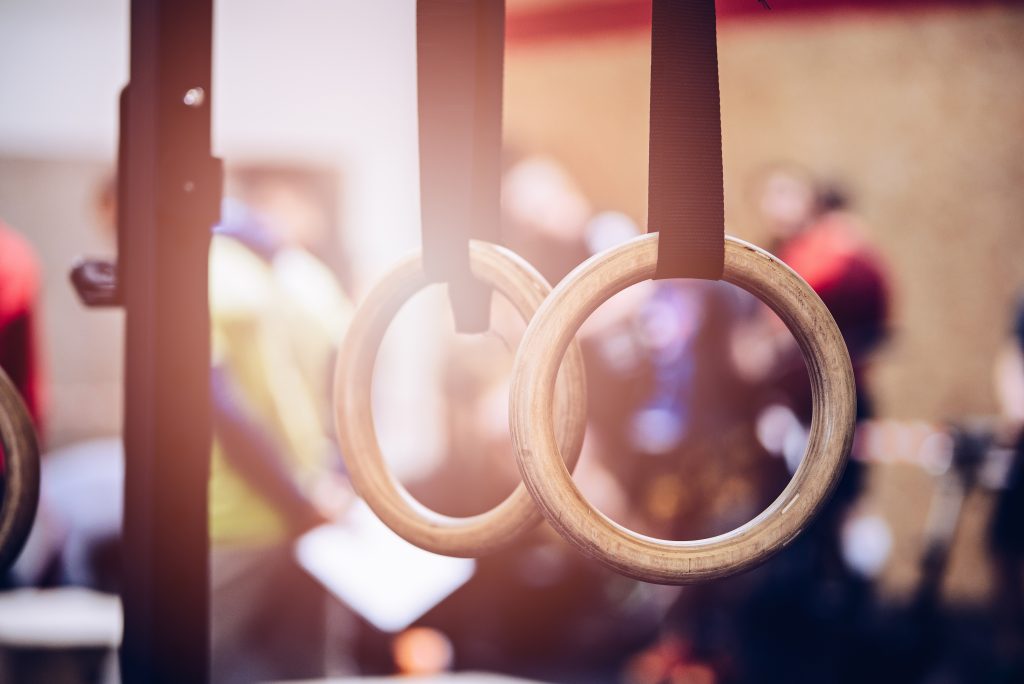
Meet My Man-Crush
TG: Can you take a few moments to inform my readership how awesome you are?
DP: Sure Tony, I’m not 100% I’d use the word “awesome” to describe myself but I’ll give you a little background on me.
My name is Dan Pope.
I’m a physical therapist and strength coach.
I’ve got a pretty big background in sports, particularly strength and fitness. I was a polevaulter in college at Rutgers. After that I got really involved in Strongman and won a state and national title in 2009. After that I got involved in CrossFit and have competed at the CrossFit Regionals competition twice. Now I’m a bit washed up but still enjoy lifting heavy things in the gym.
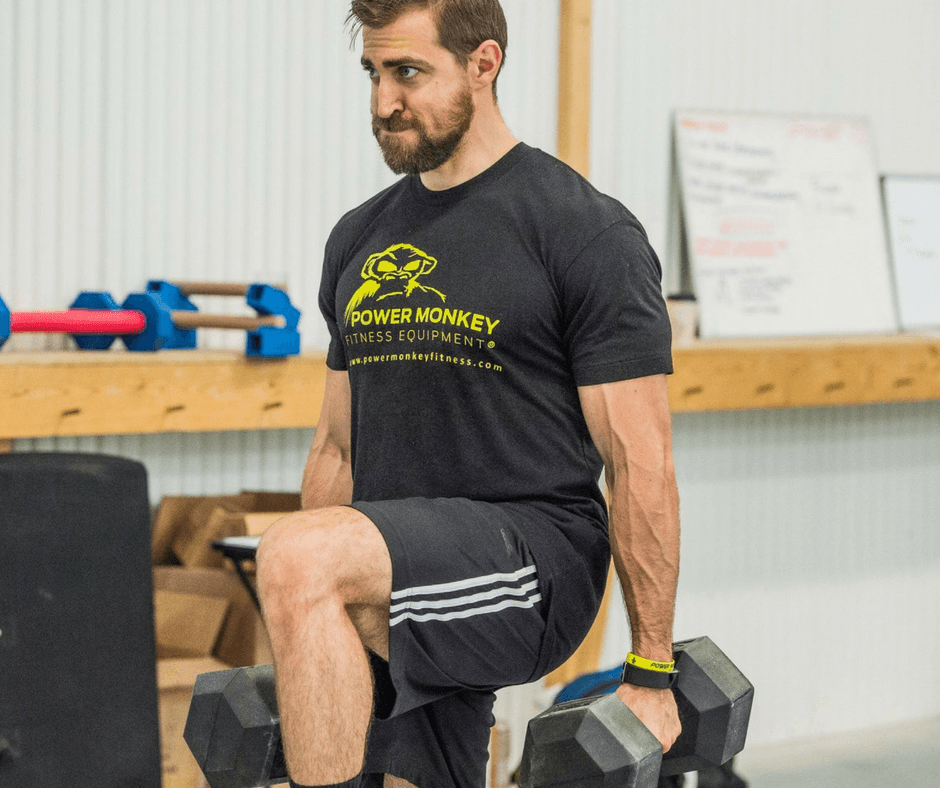
I’ve also always been very involved in the fitness and strength world from a professional background. I’ve been a personal trainer and strength coach for about 15 years and did that full time before becoming a physical therapist.
I got into the pain and injury game as a strength coach and personal trainer because I was working with people on a very regular basis that had pain and injury. Every time I was working with these folks I’d refer them to a physical therapist. The physical therapists I was working with kept on telling me, “Of course your athlete got hurt, you were performing deadlifts.” or “Of course your athlete got hurt you were performing kettle bell swings.” Basically every exercise in the gym was responsible for injury.
Being a meathead at heart myself, I knew this had to be wrong. I wanted to learn how to help these people. So I went on a journey to do exactly that.
Fast forward over a decade of schooling and experience and I’ve found that this old advice was anything but true.
Training is definitely good for you, for getting out of pain and ALSO preventing future injury (duh).
However, there is definitely an art to it.
You can’t go willy nilly with your clients in the gym and expect to never get them injured. You also can’t go blindly into working with some one who is injured or coming out of an injury. If you make the wrong decisions you can keep them painful or even make them worse.
Do the right things and you can continue working towards their goals safely and can help them get out of pain as well. So I’ve basically devoted my life towards helping athletes in pain and also teaching other fitness and rehab. professionals how to safely and effectively work with these folks.
I also love gratuitous amounts of grilled cheese once per week and have a pet snapping turtle named Champ.
TG: For the record, I wouldn’t have had enough eye rolls to give if I had to endure a bunch of narrow-minded physical therapists – who likely never lifted a weight in their life – tell me that deadlifts were the bane of everyone’s injuries.
Anyway, with the particulars out of the way, who is the Fitness Pain Free Certification designed for and what do you feel separates itself from the masses?
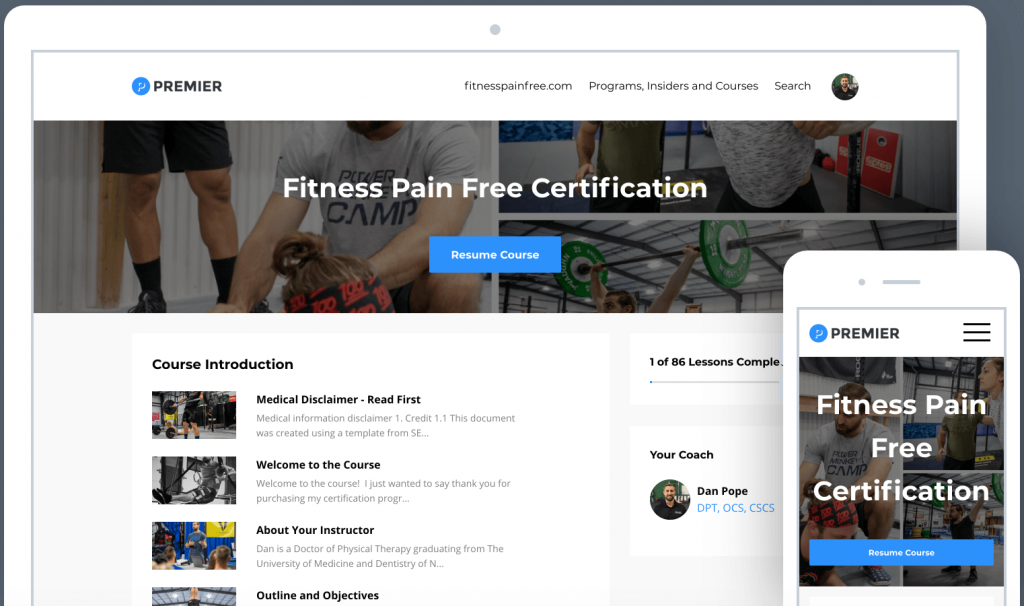
DP: I actually created this certification because I feel it fulfills a very specific niche.
I still really feel there are no certifications out there right now that do a good job of preparing fitness professionals to work with individuals with pain and injury.
It used to drive me crazy as a personal trainer back in the day.
I’d be working with people in pain every day of the week and was supposed to know how to deal with all of these people with complex pain problems. The solution for pain was always, “Just avoid doing anything that hurts and refer out to a doctor or other healthcare provide.” Meanwhile as I said previously the healthcare providers were no help and were even more useless than I was.
The truth of the matter is that the good trainers out there would figure out how to work with painful folks over time, but this made no sense to me. If you want to be a plumber, there’s education for that. If you want to be a physician there is school for that. For trainers there was school and certifications but everyone stayed away from pain and injury. Pain remained this nebulous problem only reserved for healthcare providers and physicians, yet half of my clients had some sort of nagging injury they were dealing with that affected their ability to train on a regular basis.
Meanwhile, the healthcare providers don’t have the knowledge to work with athletes in the gym. They’re making exercise the villain when we know this anything but the truth. For this reason there isn’t any good certification out there that shows these folks how to work effectively with powerlifters, olympic weightlifters, CrossFit athletes and really anyone who just likes to train hard in the gym.
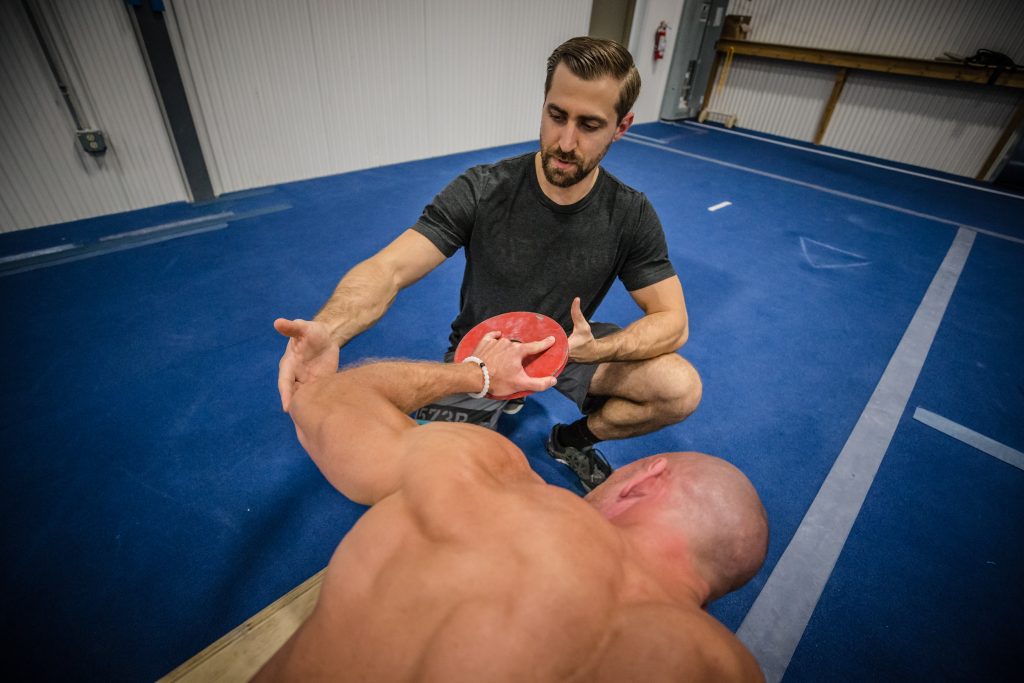
With that being said, I made this certification with these two folks in mind.
- For the fitness professionals I completely demystify pain and injury and show you exactly how to safely and effectively work with people in pain.
- For the healthcare providers I show them how to effectively get these folks out of pain, back to high level performance and how to keep them pain free for the long haul.
TG: What I respect about you most is that you’re not only an amazing therapist/clinician, but you also practice what you preach. I.e., you actually lift weights. I know you’ve touched in this already, but just how integral do you feel the whole “you gotta lift shit to fix shit” manta plays with helping people get out of pain?
DP: Hahaha, I think it all comes down to the person’s goals and what they’re trying to get back to.
I think there is a trend right now in the physical therapy and strength world that heavy strength training fixes everything.
I’ve got to be honest, I’d love to shout that from the roof tops if that was completely true.
In reality a lot of treatments can be effective for pain.
Back pain is a great example. 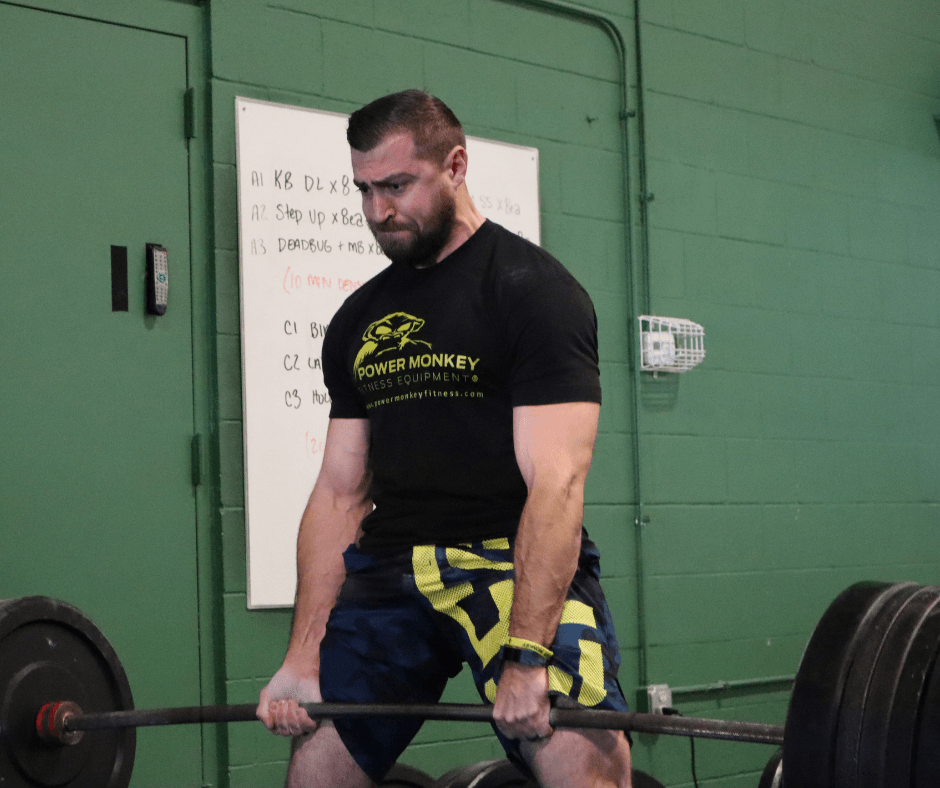
We have research to show thats squats and deadlifts are helpful for getting people out of pain. However, we also have research to show that walking, aerobic exercise, core stability and pilates can help decrease low back pain. We also have some research to show that sometimes deadlifting is not the best plan of action to get out of pain.
I think the best treatment option does two things.
For one, it’s got to be something that the person will actually do. So it definitely helps if the person enjoys some sort of active exercise.
Secondly, the rehab has to be specific to what the athlete wants to get back to.
If you take a 600lb deadlifter with low back pain and rehab them with pilates for three months, great. They’re out of pain. But if you ask them to pick up a 600lb barbell after three months of nothing but pilates you’ve probably got another injury on your hands. So if you want to get back to weight training then yes, you’ve got to pick some heavy shit up.
The body is very adaptable if we show it the stress it needs to adapt to. Show it that it needs to be able to lift heavy shit and it will learn and grow.
TG: Since we’re on the topic of addressing and training around injury: Which inane term makes you want to throw your face into a wall more when you hear it: Shoulder impingement or anterior knee pain? I know you’re on the same page as me that those two terms really don’t mean anything (but we have to use nevertheless).
DP: Man, I have a bunch.
I think the term that I’m disliking recently is “balance”.
I.e., The reason why your shoulder got hurt is because you have a poor “balance” of training all of the muscles around the shoulder.
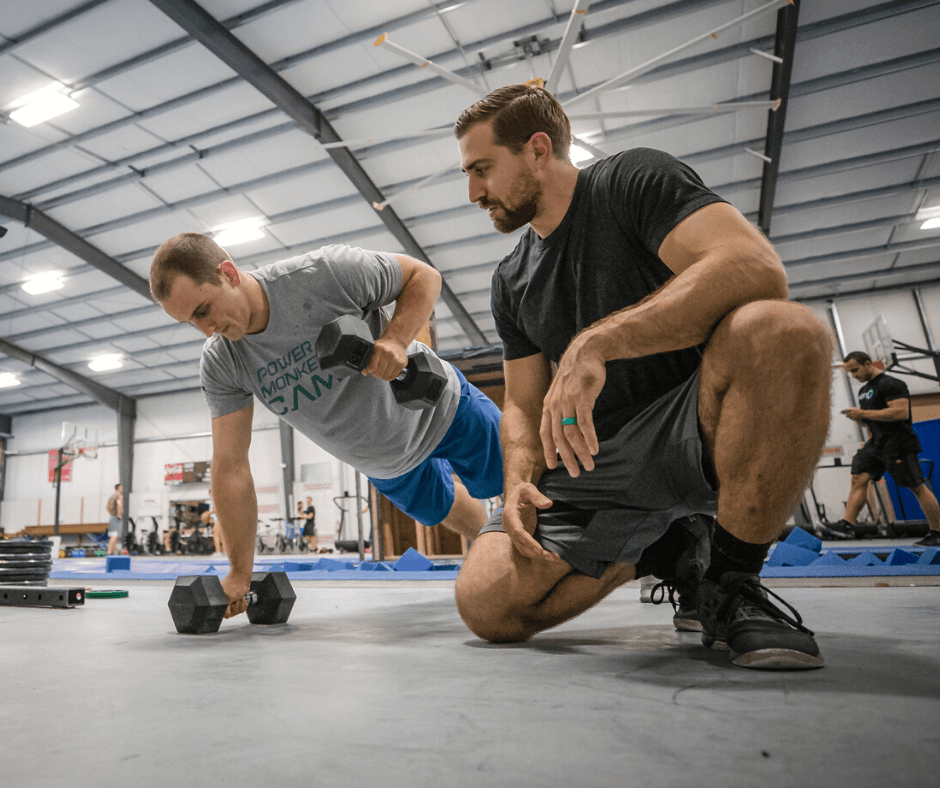
What I will say is that having a comprehensive program for the shoulder is important, so balance is important from that perspective.
However, in other sports we very clearly define “mechanisms of injury” or basically how people get hurt playing their sport. For ACL injuries in the knee for example it’s usually when an athlete is pivoting and their knee goes in under too much load.
Boom, torn ACL.
So how do we go about preventing future injury? We work on pivoting and landing without having knee in. It makes total sense. However, we don’t always approach injury prevention in the gym the same way.
Let’s say I hurt my shoulder bench pressing. Now, I can chalk this up to “having a poor balance” of shoulder training in the gym.
But this doesn’t really make sense to me.
The shoulder breaks down because it doesn’t have the strength and integrity to handle the forces of training. These injuries are typically “overuse” in nature.
This means to me that the shoulder was either:
1) Under too much stress (excessive volume / intensity)
2) Not strong (or prepared) enough to handle the forces of training
3) Not recovering well enough
So if we understand that this is why the shoulder breaks down we can very easily come up with a strategy to prevent future injury.
For the bench presser’s shoulder that may mean:
1) Decreasing pressing volume slightly
2) Strengthening the pressing muscles with accessory exercises to improve the shoulder’s ability to tolerate training
3) Improve sleep, nutrition and stress management
Now, maybe a “balanced” shoulder training program does all of these things but I feel like we’re just beating around the bush. If we want to prevent injury we need to figure out why injuries are happening in the first place and come up with a comprehensive plan to prevent future injury based on these factors.
TG: I’m constantly asked what are the major differences between writing programs for athletes and that of general population clients.
Do you have any thoughts?
DP: I’m a big fan of writing training plans with end goals in mind.
- For athletes this is generally optimized performance.
- For the general population this is usually health, function and looking good naked.
For athlete’s we’ll always be pushing the boundary between doing as much as possible to optimize performance and doing too much and getting injured.
This means there is a lot more wiggle room for general population folks.
For athlete’s we’re constantly pushing the envelope.
TG: With regards to working with athletes, load management is a term that’s grown in popularity of late. Training around injury is something I know you’re fanatical about – in a good way (I refer to it as Trainable Menu) – can you offer some general tidbits for other fitness professionals to consider when working with athletes/clients who are injured?
DP: For sure.
Exercise is an amazing medicine that heals injured structures in our bodies. What’s important to understand is that this medicine must be dosed appropriately after an injury to have positive effects. Think of the difference between taking two aspirin and taking the whole bottle.
One is the perfect amount and the other kills you.
The magic is in the dosage.
After an injury we need to find that right dosage to create a positive effect.
I think step 1 is learning how to dose stress to muscles and joints. For example, if someone has knee pain, what factors increase and decrease stress on the knee in the gym? Well, technique, speed of execution and load are three easy variables we can use to dose stress. If we understand these principles we can figure out the right dosage of exercise and then slowly progress this dosage as our clients heal over time.
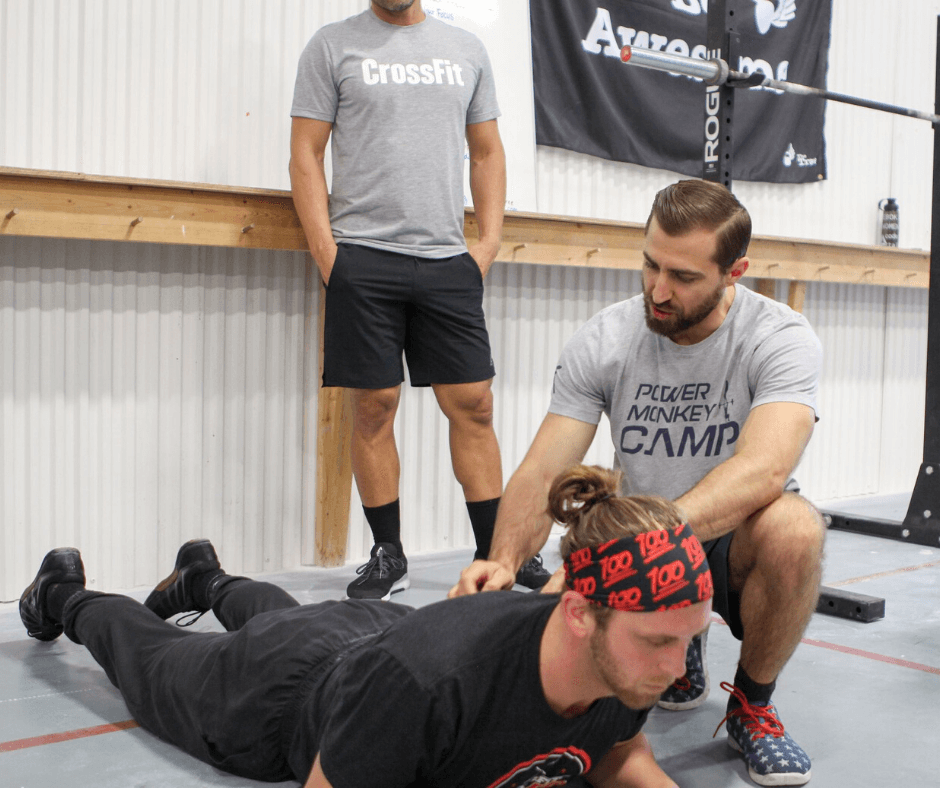
The other important concept to understand is that a lot of injuries don’t tend to get better unless we stress it enough. So you get these folks where rest doesn’t help them and they’ve got a bum knee for the rest of their lives because no one ever taught them to load appropriately and they thought loading it was bad. If you learn these principles you can be the person who finally ends your client’s pain problem.
TG: Let’s end with a bit of fun.
I’ve always kinda bashed on the kipping pull-up. Okay, there’s no “kinda” about it. I know you cover the exercise in your course and I want to learn: Can you “defend” it here?
Why is it a thing? Who does it benefit? What are the training advantages?
DP: You’re right, kipping is terrible for you…
Just kidding!
My views on kipping have been shaped largely by two things.
1) I work with a bunch of olympic level gymnasts that coach CrossFit athletes how to move well. Kipping is a very common and remedial movement for those guys. There are certainly good and bad ways to kip and when done well can be a safe and effective exercise.
2) Second, I really don’t see too many injuries strictly from kipping. Ya, they certainly do happen but I’d say I see more back issues with deadlifting and shoulder issues with pressing then kipping injuries.
If you have absolutely no desire to compete in a competition that allows kipping during pull-ups then I wouldn’t train it. You can probably build as much muscle and strength (and probably better) with our good old friend the strict pull-up.
However, if you want to perform kipping pull-ups then you probably want to learn how to perform them with solid technique and also how to program them into your training properly.
What I will say is that learning some of the more advanced dynamic gymnastics movements like ring muscle-ups and front uprises is a lot of fun and can be a really cool addition to your normal training. You should probably learn how to do this properly before going about it though.
Fitness Pain Free Certification
Remember above when I said how this course is fucking outstanding?
That’s an understatement.
You get 20+ hours of lecture and videos of Dan covering a plethora of topics. If you’re a personal trainer/coach in any capacity this is an investment in yourself that will be well worth the price.
Course Curriculum
- 7 Reasons Why Athletes Get Hurt in the Gym and What To Do About It
- What is Pain and Why Modification is Essential
- How to Create Injury Prevention Plans
- How to Write Rehabilitation Programs
- Breaking Down the Power Lifts
- Breaking Down the Olympic Lifts
- Pull-ups, Muscle-ups and Kipping
- Handstands and Handstand Push-ups
- Overhead Press, Push-ups and Dips
- Shoulder, Low Back, Knee and Hip Pain
All of this on top of endless templates, progressions/regressions, videos on exercise technique, how to develop injury prevention and rehabilitation programs, as well as assessment breakdowns.
To sign-up go ———> HERE.
And remember to use the special discount code – TONYGFPF – at checkout for $200 off the regular price.
Act now because the code only lasts until the next of January.




